Two Solar Eclipses seen from TurkeyIn 1999 and 2006 the umbra of the moon eclipsing the sun crossed Turkey. Marco organized expeditions to Anatolia to observe both events,
close to the Tigris springs in 1999, and to a salt lake south of Konya in 2006. The time span of seven years corresponds to a bit more
than half the 11 year solar cycle, thus enhancing differences in the appearance of the solar corona, the sun's outermost and tenuous
envelope. |
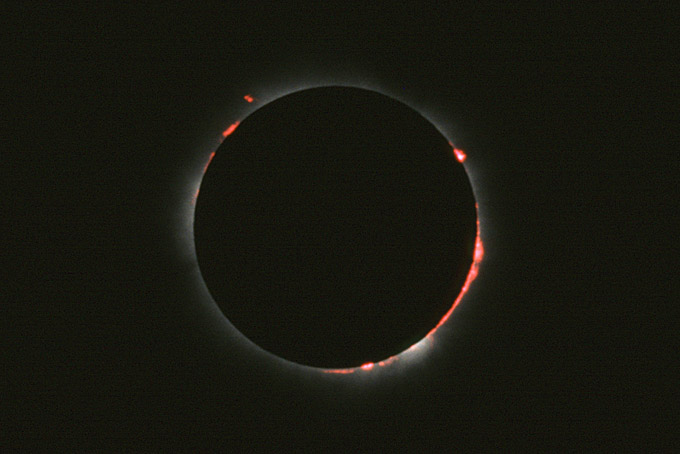 11 Aug 1999, just after the start of the total eclipse, 1/1000 sec exposure. f=500mm f/8.
Since the moon is only very slightly larger than the Sun, which is close to its strongest activity, a bright red chromosphere with many red prominences is clearly visible. | 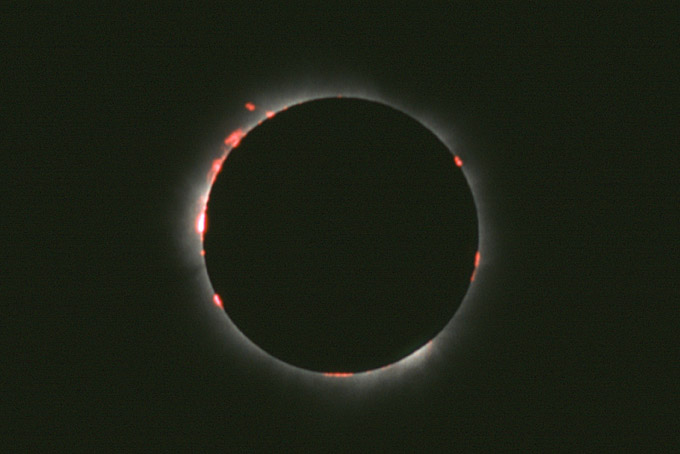 11 Aug 1999, just before the end of the total eclipse, 1/1000 sec exposure.
Note how the moon has shifted towards the right in relation to the sun, hiding the chromosphere on the right, while the prominences on the left appear in full size. | 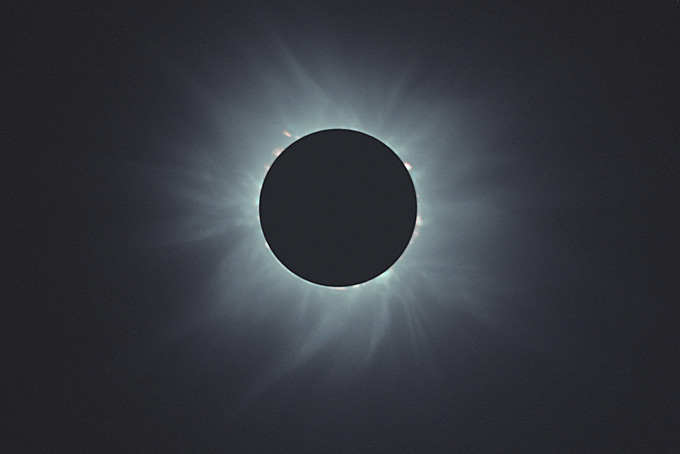 11 Aug 1999, composite of 11 photos exposed from 1/1000 sec to 1/2 sec. Nikon F2, f=500mm f/8.
The corona is visible here up to a distance of 2 solar radii from the moon's limb. During solar maximum the corona shows little symmetry. | 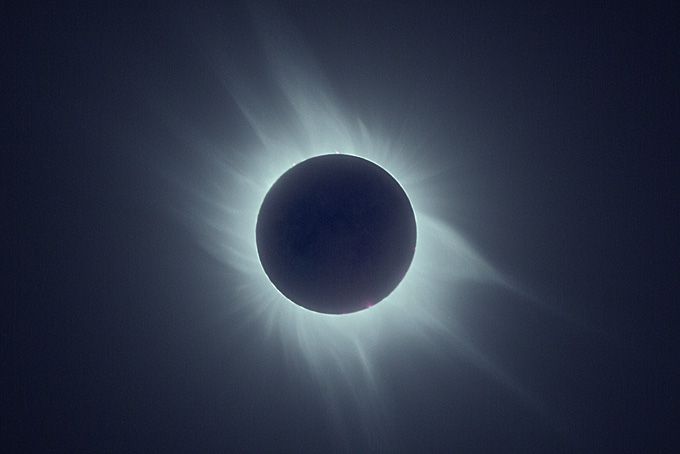 29 Mar 2006, composite of 10 photos exposed from 1/2000 sec to 1 sec. FujiS2, f=500mm f/8.
A comparison with the previous photo emphasizes the corona's symmetry during a solar minimum. Due to a longer exposure, even the lunar surface, illuminated by Earthshine, is visible (note dark lunar maria). | 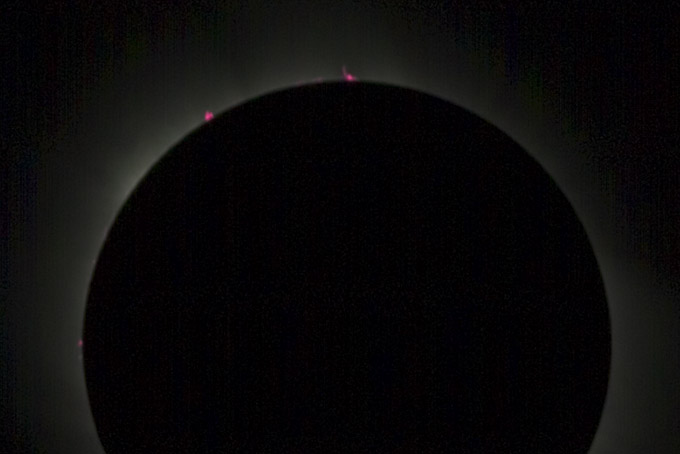 29 Mar 2006, just after the start of the total eclipse, 1/2000 sec exposure. f=500mm f/8.
This eclipse was longer than in 1999 (4 min vs 2 min), i.e. the moon was bigger than the sun, hiding the whole chromosphere at mid-eclipse. Moreover, during solar minimum, the red prominences are smaller and fainter. |